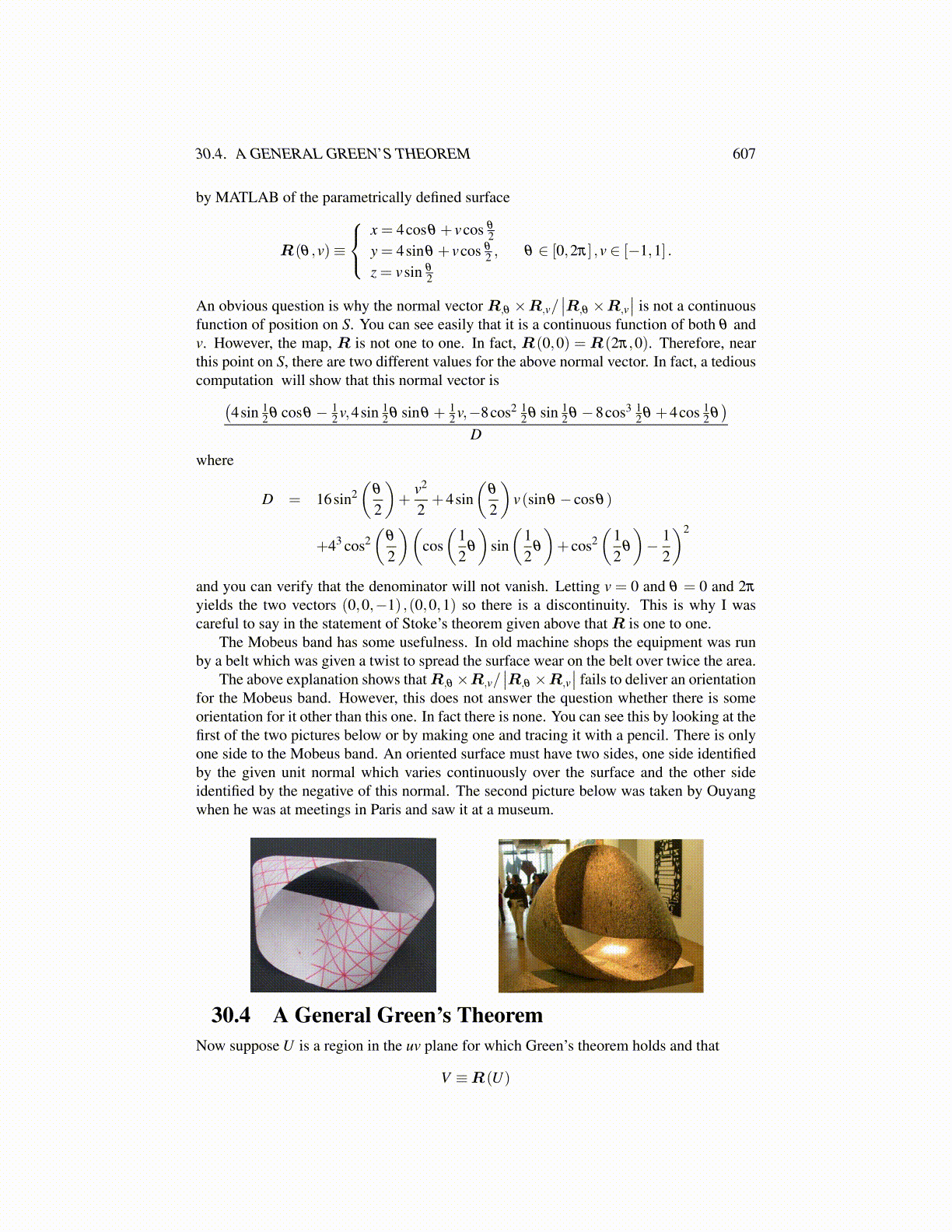
30.5. CONSERVATIVE VECTOR FIELDS 607
30.5.1 Some TerminologyIf F = (P,Q,R) is a vector field. Then the statement that F is conservative is the same assaying the differential form Pdx+Qdy+Rdz is exact. Some people like to say things interms of vector fields and some say it in terms of differential forms. In Example 30.5.8, thedifferential form
(4x3 +2
(cos(x2 + z2
))x)
dx+dy+(2(cos(x2 + z2
))z)
dz is exact.
Definition 30.5.6 A set of points in three dimensional space V is simply connectedif every piecewise smooth closed curve C is the edge of a surface S which is containedentirely within V in such a way that Stokes theorem holds for the surface S and its edge, C.
C
S
This is like a sock. The surface is the sock and the curve C goes around the opening ofthe sock.
As an application of Stoke’s theorem, here is a useful theorem which gives a way tocheck whether a vector field is conservative.
Theorem 30.5.7 For a three dimensional simply connected open set V and F a C1
vector field defined in V , F is conservative if ∇×F = 0 in V .
Proof: If ∇×F = 0 then taking an arbitrary closed curve C, and letting S be a surfacebounded by C which is contained in V , Stoke’s theorem implies
0 =∫
S∇×F ·ndA =
∫CF ·dR.
Thus F is conservative.
Example 30.5.8 Determine whether the vector field(4x3 +2
(cos(x2 + z2))x,1,2
(cos(x2 + z2))z
)is conservative.
Since this vector field is defined on all of R3, it only remains to take its curl and see ifit is the zero vector.∣∣∣∣∣∣
i j k∂x ∂y ∂z
4x3 +2(cos(x2 + z2
))x 1 2
(cos(x2 + z2
))z
∣∣∣∣∣∣ .This is obviously equal to zero. Therefore, the given vector field is conservative. Can youfind a potential function for it? Let φ be the potential function. Then φ z = 2
(cos(x2 + z2
))z
and so φ (x,y,z) = sin(x2 + z2
)+g(x,y). Now taking the derivative of φ with respect to y,
you see gy = 1 so g(x,y) = y+ h(x). Hence φ (x,y,z) = y+ g(x)+ sin(x2 + z2
). Taking
the derivative with respect to x, you get 4x3 +2(cos(x2 + z2
))x = g′ (x)+2xcos
(x2 + z2
)and so it suffices to take g(x) = x4. Hence φ (x,y,z) = y+ x4 + sin
(x2 + z2
).